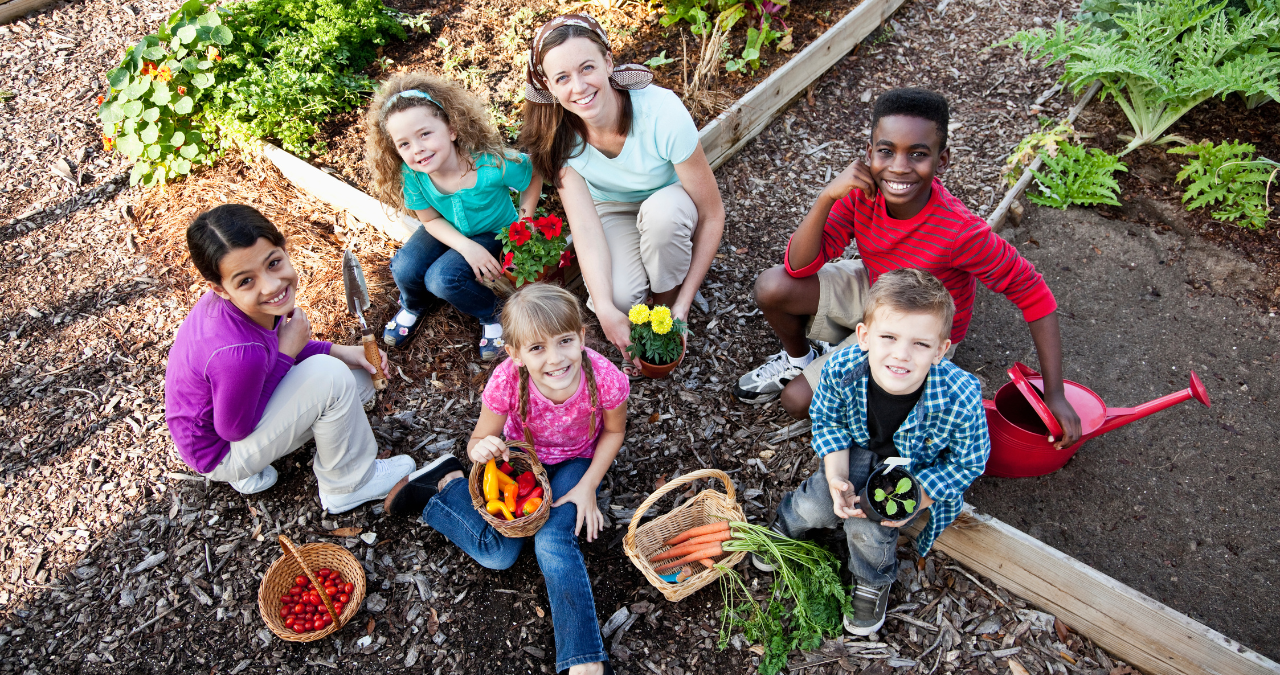
The benefits of getting kids involved in gardening
From an early age, children are fascinated by the natural world. They love to explore outdoors, getting their hands dirty as they discover new things about the plants and animals around them.Gardening is a perfect activity for kids, as it provides an opportunity to learn about the life cycle of plants and the importance of taking care of the environment. In addition, gardening can be a great way for kids to get some exercise and fresh air. And unlike many other activities, gardening is something that kids can enjoy regardless of their skill level.
Growing plants can teach children about nature and the environment while providing them with a sense of accomplishment. Whether they’re helping to plant seeds or harvesting the fruits of their labor, kids will take pride in their accomplishments and have a lot of fun in the process.
In addition, gardening can be a great way for families to bond and spend quality time together. And it doesn't have to be a lot of work! Even simple tasks like planting flowers or pulling weeds can teach kids about the satisfaction that comes from taking care of living things. So if you're looking for a fun and educational activity for your family, consider getting everyone involved in gardening.
How To Make Gardening Fun And Educational For Kids
There are a few simple things you can do to make gardening more fun and educational for kids.- Give them their own space: Let kids choose a spot in the garden where they can plant their own flowers or vegetables. This will give them a sense of ownership and responsibility for their plants.
- Give them simple tasks: Don’t overwhelm kids with too much work. Start with simple tasks like pulling weeds or watering plants. As they get more comfortable, they can help with more difficult tasks like planting seeds or harvesting vegetables.
- Teach them about the plants: Take some time to teach kids about the different types of plants in your garden. Show them how to identify weeds from flowers, and explain how plants grow from seeds.
- Let them get dirty: Gardening is a messy activity, so don’t be afraid to let kids get dirty. They’ll have more fun if they can get their hands dirty and explore the different textures of the soil and plants.
- Be patient: Gardening is a process, so it’s important to be patient. Explain to kids that plants need time to grow, and encourage them to be patient as they watch their plants grow.
The Best Types Of Plants And Gardens For Kids
When choosing plants for your garden, it’s important to consider which ones will be safe and easy for kids to handle. Here are a few suggestions:- Flowers: Flowers are a great option for kids, as they’re usually brightly colored and have a soft texture. Zinnias, sunflowers, and marigolds are all good options.
- Herbs: Herbs are another safe option for kids, and they can be used in cooking or made into tea. Basil, mint, and chamomile are all good choices.
- Vegetables: Some vegetable plants, like tomatoes and cucumbers, can be prickly to the touch. But there are plenty of other vegetables that are safe and easy for kids to grow, including peas, beans, and lettuce.
Creating A Sustainable Future Through Gardening With Kids
Gardening is not only a fun and educational activity for kids, but it’s also a great way to teach them about sustainability. Here are a few ways to do that:- Use recycled materials: Turn recycled materials into gardening tools or containers. This will teach kids about the importance of recycling and reusing materials.
- Choose native plants: Native plants are adapted to the local climate and don’t require as much water or care as non-native plants. This will teach kids about the importance of using resources wisely.
- Grow food: Gardening is a great way to teach kids where food comes from and how it’s grown. This will help them to appreciate the food they eat and understand the importance of eating healthy.
- Compost: Composting is a great way to recycle organic waste and turn it into valuable fertilizer for your garden. This will teach kids about the importance of taking care of the environment.
- Save water: Teach kids about the importance of conserving water by using drought-tolerant plants in your garden. This will help them to understand the importance of using water wisely.
Now Is The Best Time To Start
Now that you know a little more about the benefits of getting kids interested in gardening, the next step is to take action! Pick a spot in your yard or garden, and let your kids help you plan and plant it. If you don't have a lot of space, consider planting in containers on a deck or patio. Even a windowsill can be the perfect spot for growing herbs or flowers.The main idea is to get your kids involved in every step of the process, from picking out the plants to watering and tending them. Make it fun! Let your kids get dirty, and don't worry about perfection. Gardening is a great opportunity to teach kids about the cycle of life, and how even the smallest things can make a big difference.
Author: Rodger St Hilaire








